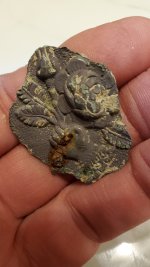DiggItUp
Full Member
- Mar 9, 2013
- 200
- 61
Hello, everyone. Today, I type this from my school during midterms week. It's dull and gray outside, and I'm extremely bored. Too cold and "open" with all the leaves off trees to detect, I'm just itching for spring time so I can detect again. I've recently taken to researching possible sites to hunt in when spring comes. What I've been doing (which seems to be the best) is overlay old maps into live, real satellite images on google earth. I've recently run into some things it wanted to hear from you guys about. I'm using an 1874 map of the area, which has little black squares as house sites with the names of the residents. Now, how do you guys go about finding the actual sites of the houses? I try to line up the image overlay so the roads are on top of each other, so I can therefore estimate where the house would be in relation to the real road. Also, many if these sites, including a "school house no. 4" are (if I'm judging and estimating correctly) directly on top of modern houses. The area is pretty rural, not urban or suburban at all. I guess what I'm really asking is if anyone can offer me advice on this, or knows a better way to find old homesites and structures. Also, once I find these sites and travel to the approximate area where they should be, what should I do? Just look around for bricks, stones, etc?
Thanks,
-_\|~<•>~|/_-
Thanks,
-_\|~<•>~|/_-
Amazon Forum Fav 👍
Last edited:



